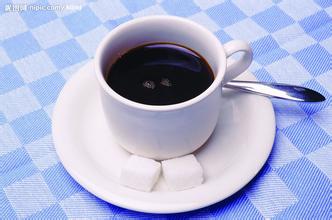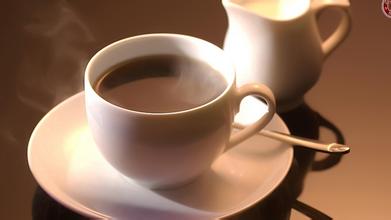The whole soft, slightly sour Salvadoran coffee flavor manor introduces the characteristics of Mercedes Manor.
From 1549 to 1763, El Salvador was the first capital of Brazil, witnessing the fusion of European, African and American cultures. As the slaves arrived in El Salvador in 1558 to work in sugar cane plantations, it also became the first slave market in the new world. The city has planned to retain many famous typical Renaissance buildings. The feature of the old city is bright, with high-quality gray marshes decorated with colorful houses. The ancient city was built on a peninsula extending into the Atlantic Ocean, occupying the end of a mountainous island and divided into cities on a steep slope.
Scenery of El Salvador
Scenery of El Salvador
And the cities below (upper and lower cities) can be reached by elevator or climb on foot. The city wall preserved along the steep slope is arched. The upper city overlooks the activities of the people in the city below. The uptown has baroque buildings and many small squares, public buildings, dwellings and gardens. They are simple and elegant and keep better than the lower city. The streets here are numerous and narrow, with a variety of patterns on the road, which are paved with black and white stones. Downtown is located near the port of the Modrow market, where houses and people's activities are carried out around the port and commerce, where the slave trade was once very popular, is now an extraordinarily bustling handicraft market in the ancient city of El Salvador in the Peronio district, San Antonio district and Sodre district distributed more than 3000 ancient buildings, of which the best reflection of the ancient city is the Pelourinho district It is the largest building complex built in Latin America during the European colonial rule, and many buildings have the ancient architectural style of Portugal.
Savanna climate. The plain area belongs to the tropical rain forest climate and the mountain area belongs to the subtropical forest climate. The average annual temperature is 25-28 ℃. The annual precipitation is more than 1800 mm in mountain areas and about 1000 mm in coastal areas. The rainy season is from May to October.
Don't underestimate El Salvador's coffee production. In its heyday, it was once the fourth largest coffee producer in the world, but decades of civil war almost dragged down the coffee industry. fortunately, the war has stopped in recent years, and the coffee industry has come back to life. The only benefit that the civil war brought to the Salvadoran country was that the farmers' fields were barren and failed to catch up with the most popular Katimo exposure train in the past two decades, thus preserving the ancient varieties of bourbon and Tibica, that is to say, El Salvador still uses the most traditional shade planting, which is of positive significance to the aroma of coffee. In 2005, the Salvadoran mixed-race Pacamara boasted in coe, which confused many international cup testers and did not know how to grade it. It was never expected that this hybrid bean not only broke the mellow boundaries of coffee, but also expanded the visibility of Salvadoran coffee.
El Salvador boutique coffee is concentrated in the volcanic rock producing areas of Santa Ana in the west and Charantanan fruit in the northwest. In recent years, the top 10 cup tests are almost entirely from these two producing areas, with an altitude of about 9-1500 meters, mainly bourbon (68%). Followed by Pacas (29%), mixed-race Pakamara, Dulaai and Kaddura accounted for only 3%.
The coffee harvest lasts from November to March. The fresh fruit of coffee is picked by hand.
On the whole, Salvadoran coffee inherits the mild quality of Sino-American coffee, which is soft, slightly sour and has beautiful sweetness. At the same time, it also has its own characteristics: the aromatic taste is slightly sour and very soft; it is pure and has no miscellaneous flavor, and the taste balance is excellent; the smooth feeling like cream chocolate is impressive The dense feeling of coffee in the mouth gives the coffee a deep taste. Salvadoran coffee is ranked alongside Mexico and Guatemala as the producers of Asa and Merdo, and is fighting for the top one or two in China and the United States with other countries. The highlands of origin are large coffee beans of all sizes, which are fragrant and mild in taste. Like Guatemala and Costa Rica, coffee in El Salvador is graded according to altitude. The higher the altitude, the better the coffee. It is divided into three grades according to elevation: SHB (strictlyhighgrown) = highlands, HEC (highgrowncentral) = mid-highlands, and CS (centralstandard) = lowlands. The best brand is Pipil, which is what the Aztec-Mayan (Aztec-Mayan) called coffee, which has been recognized by the American Organic Certification Society (OrganicCertifiedlnstituteofAmerica).
"Salvadoran coffee beans | w.kaf.name Salvadoran coffee refers to the coffee bean text teacher from El Salvador, a small country in South America."
Salvadoran coffee
El Salvador (ElSalvador) is one of the small countries in Central America, where coffee is light, fragrant, pure, slightly sour and characterized by excellent balance of flavor. It is a specialty of Central America. It has the characteristics of sour, bitter and sweet, and the best baking degree is moderate and deep.

Important Notice :
前街咖啡 FrontStreet Coffee has moved to new addredd:
FrontStreet Coffee Address: 315,Donghua East Road,GuangZhou
Tel:020 38364473
- Prev

Introduction to the characteristics of coffee flavor and taste of Los Congo Manor in Nicaragua
Republic of Nicaragua (English: The Republic of Nicaragua; Spanish: La Repblica de Nicaragua). The interpretation of the name of the country comes from the surname of the Indian chief Niagaru, also known as the country of lakes and volcanoes. The Nicaraguan national flag was launched on August 27th, 1971. the national flag is rectangular and the ratio of length to width is 5:3. From top to bottom, the flag consists of three parallel phases: blue, white and blue.
- Next

Introduction to the flavor and taste characteristics of Panamanian Alida Manor Coffee with special sweetness and vanilla flavor
The Panamanian isthmus was originally a settlement of the Panama Canal of the Indian Ministry of Chibucha and the Caribbean. In 1501, Panama was colonized by Spain and belonged to the Governor of New Granada. In 1821, Panama became independent and became part of the Greater Republic of Columbia. In 1830, after the dissolution of the Republic of Great Columbia, it became the New Granada (later known as Colombia).
Related
- Does Rose Summer choose Blue, Green or Red? Detailed explanation of Rose Summer Coffee plots and Classification in Panamanian Jade Manor
- What is the difference between the origin, producing area, processing plant, cooperative and manor of coffee beans?
- How fine does the espresso powder fit? how to grind the espresso?
- Sca coffee roasting degree color card coffee roasting degree 8 roasting color values what do you mean?
- The practice of lattes: how to make lattes at home
- Introduction to Indonesian Fine Coffee beans-- Java Coffee producing area of Indonesian Arabica Coffee
- How much will the flavor of light and medium roasted rose summer be expressed? What baking level is rose summer suitable for?
- Introduction to the characteristics of washing, sun-drying or wet-planing coffee commonly used in Mantenin, Indonesia
- Price characteristics of Arabica Coffee Bean Starbucks introduction to Manning Coffee Bean Taste producing area Variety Manor
- What is the authentic Yega flavor? What are the flavor characteristics of the really excellent Yejasuffi coffee beans?

